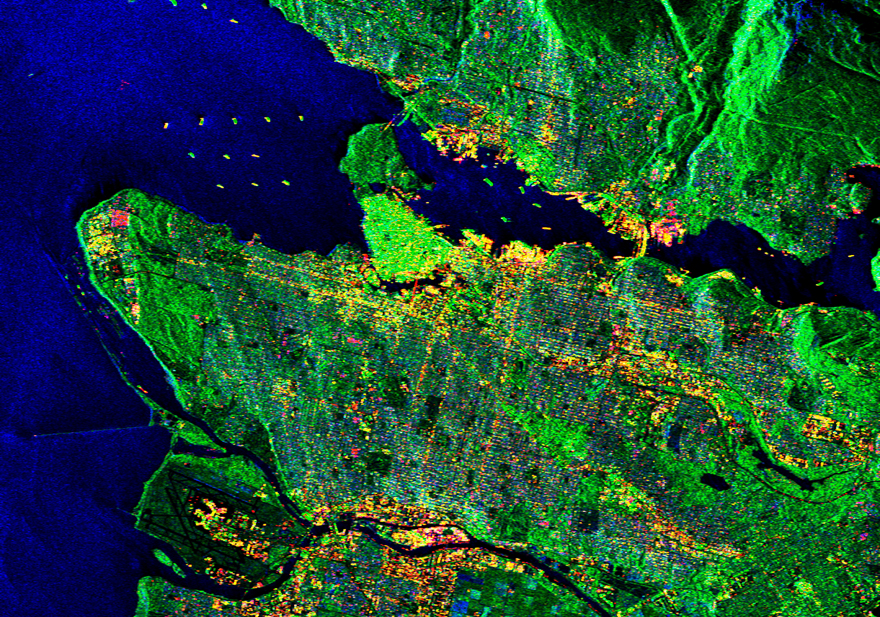Improving Synthetic Aperture Radar technologies

RADARSAT-2 image of Vancouver. (Credit: RADARSAT-2 Data and Products © MacDonald Dettwiler and Associates Ltd () – All Rights Reserved – RADARSAT is an official mark of the Canadian Space Agency)
SFU and MDA form an Industrial Research Chair
Canada is well known all over the world for its radar imagery expertise. Ever since the launch of our first Earth observation satellite, RADARSAT-1, our country has played an important role in using satellite Synthetic Aperture Radar (SAR) data to help us understand and monitor the resources of our planet. As such, there is a strong interest among the space community in continuously developing state-of-the-art SAR technologies and increasing the number of Canadian specialists with remote sensing and data analysis skills.
In order to address these critical needs, Simon Fraser University (SFU) and MacDonald, Dettwiler and Associates Ltd. (MDA) created an Industrial Research Chair (IRC). Students and subject-matter experts will be exploring ways to improve and better exploit technologies that use SAR data provided by Earth observation satellites, such as RADARSAT-2. The IRC research program will focus more specifically on developing leading-edge applications in disaster management, environmental and natural resource monitoring, and maritime surveillance.
As part of this IRC, students will gain hands-on experience in a university–industry working environment. With a more knowledgeable and skilled workforce, Canada will be able to fully take advantage of the SAR data acquired by the upcoming RADARSAT Constellation.
How are SAR sensors used and why?
The SAR antenna emits a signal to the Earth's surface. That signal bounces back and is then captured by the satellite's sensor. This allows us to produce an image of the surface. As opposed to optical imagery, the data can be collected anytime, regardless of climate conditions or time of day. SAR images are useful for a wide variety of purposes at sea and on Earth. For instance, they can help farmers better manage their crops, geologists select exploration sites, and navigators plan their safe passage in icy waters.
IRC partners
This IRC is a partnership between SFU, MDA, the Natural Sciences and Engineering Research Council of Canada, and the Canadian Space Agency (CSA). The CSA is contributing a total of $500,000 over the next five years.
What is an IRC?
Typically formed by key players in industry and led by a university, an IRC serves two purposes:
- Assist universities in building on existing strengths to achieve the critical mass required for a major research endeavour in science and engineering of interest to industry;
- Contribute to the development of research efforts in fields that have not yet been developed in Canadian universities but for which there is an important industrial need.
Source: Natural Sciences and Engineering Research Council of Canada
- Date modified: